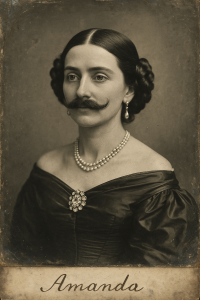Exploring “The Revelation of Revelations” by Jane Lead available as a PDF by Diane Guerrero.
Listen to the NotebookLM podcast discussing this article
Companion Guide
Jane Lead: Exclusive Concepts
The excerpts contain “40 PROPOSITIONS To be considered by them that would read with profit Jane Lead’s book of the Revelation of Revelations”, which appear to summarize the key themes and concepts discussed within that book.
According to these propositions, the “Revelation of Revelations” has a mystical and magical sense, in addition to a literal and ecclesiastical one. The mystical sense relates to the hidden mystery of God in the soul, while the magical sense concerns the knowing and setting on work the forms of nature by the Holy Ghost. Understanding this sense is not possible through human reason, but only through the Divine Spirit within a person, although this spirit can be obstructed or hidden.
Key concepts described within the framework of the “Revelation of Revelations” include:
- The Seven Seals and Seven Candlesticks: The Seven Seals are understood mystically as the seven forms of nature in the soul, representing the Seven Spirits belonging to the Father’s power in anger and severity. The Seven Candlesticks, conversely, are understood as the Son’s nature.
- The Lamb’s Role: The soul is described as being sealed up in the justice of God under the Seven Seals, and only the Lamb that was slain and is alive is able to break open these seals and enkindle light in the soul to overcome death.
- Revelation of the Kingdom and Angelical World: The opening of the Seals by the Lamb signifies the revelation of His Kingdom and of the Angelical World. This process involves the Lamb generating the soul into the light through Himself.
- New Generation and Redemption: The new generation of the soul is described as a passing out of darkness into light through the power of the Lamb, redeeming the soul from the wrathful, dark, and fiery properties of nature. This internal resurrection and redemption leads the spirit through the seals into the substantiality of Christ’s Universal Body, the center of Eternal Light where Wisdom reigns.
- The Seventh Seal and the Seas: The Seventh Seal, when opened, reveals the Holy Temple of God containing the Seven Candlesticks (the Seven Lights of Christ in the soul). The Seventh Seal is also linked to two “Apocalyptical Seas”. When the Seventh Seal is shut, it represents the Sea of Corrupt Nature and is the seat of the Antichristian Beast. When opened, it represents the Sea of Uncorrupt Nature and is the seat of the peaceable Lamb-like Kingdom and the Throne of Christ in the soul.
- The Glassy Sea: This is identified as the Seventh Spirit of the eternal incorruptible nature, where the Divine Majesty finds joy and delight. It is where the blessed Trinity manifests and beholds the true Angelical World. The Glassy Sea is described as the water-spirit and water-stone of the wise, representing the substance and corporeity of the divine nature and the compaction of all eternal divine powers, properties, and forms, containing the burning Lamps of Love (the Seven Spirits of the Lamb).
- Conquerors upon the Glassy Sea: Those who stand upon this Sea are individuals in whom all the Seven Seals have been broken and the Seven Holy Lights of Christ unsealed. Through a perfect conversion of the human will into the divine will, they are made “as it were the Harps of God”.
- The Process of Transformation: The “Revelation of Revelations” outlines a process involving:
- Mystical Death and Annihilation: Comprehended under the Seven Seals, this involves a sevenfold purification and refining, primarily under the first four seals.
- Mystic Resurrection and the First Resurrection: Looked for under the Mystery of the Seven Thunders.
- Mystical Ascension: A “manuduction to the Divine Magic,” set forth according to the successive gates of the New Jerusalem.
- Glorification, or Descension: The state of the New Jerusalem itself, a full consummation of the divine nuptials introduced into the soul, answering to the city descending from God.
- Divine Magic: In the consummation of the divine nuptials, the true Divine Magic breaks forth through the soul’s “unipotency” with Christ, allowing nature’s secret forms to be set on work from the Holy Ghost.
- Angels of the Revelations: These are described as Angels of Time who have been consummated in this manner and are Magicians of the Holy Ghost and Priests of the Third and highest Order.
In essence, the “Revelation of Revelations,” as described through these propositions, provides a mystical and magical interpretation of the book of Revelation, focusing on the internal spiritual transformation of the soul through various stages represented by the seals, seas, and other symbols, leading to union with the divine and the manifestation of God’s Kingdom and power within individuals and on Earth.
Want more propositions? In 1697, Jane Lead published 60 propositions that will blow your mind!
 Which is another way of saying:
Which is another way of saying: